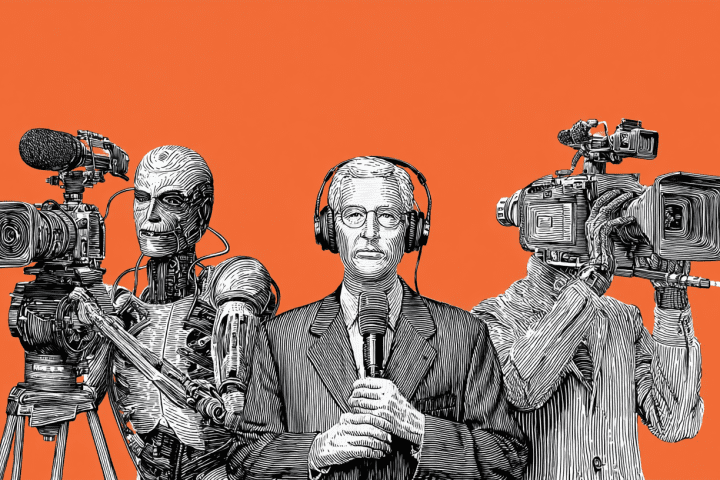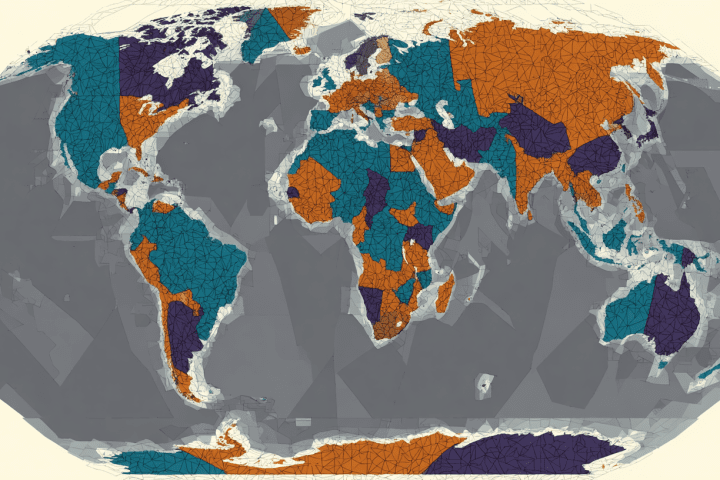The convergence of artificial intelligence, quantum computing, space technology, and bioengineering is ushering in an unprecedented era of technological transformation. These four pillars of innovation are not developing in isolation but rather reinforcing each other to create solutions that were unimaginable just decades ago. From AI-powered drug discovery to quantum-enhanced space missions, the intersection of these technologies promises to reshape every aspect of human existence and open new frontiers for exploration and development.
Artificial Intelligence: The Catalyst of Innovation
Artificial intelligence has emerged as the fundamental enabler across all technological domains, serving as both a standalone innovation and a multiplier for other breakthrough technologies. AI’s ability to process vast datasets, identify patterns, and make predictions is revolutionizing everything from scientific research to space exploration.
Machine learning algorithms are transforming biomedical research by accelerating drug discovery timelines from decades to years. Companies like Recursion and Generate Biomedicines are leveraging AI to understand cellular behavior, predict protein structures, and design novel therapeutics. AI-driven platforms can now screen millions of potential drug compounds virtually, identifying promising candidates with unprecedented speed and accuracy.
The integration of AI into quantum computing research is equally transformative. Machine learning algorithms help optimize quantum circuits, reduce noise in quantum systems, and discover new quantum algorithms. This symbiotic relationship between AI and quantum computing accelerates the development of both technologies while creating entirely new computational paradigms.
Space exploration benefits enormously from AI applications, from autonomous navigation systems that enable spacecraft to operate independently across vast distances to AI-powered analysis of astronomical data that helps identify potentially habitable exoplanets. Mars rovers like Perseverance use AI to analyze terrain and select optimal paths without waiting for instructions from Earth.
AI in Scientific Discovery and Research
The impact of artificial intelligence on scientific methodology itself cannot be overstated:
- Automated hypothesis generation: AI systems can analyze scientific literature and experimental data to propose novel research hypotheses, accelerating the pace of scientific discovery
- Real-time experiment optimization: Machine learning algorithms can adjust experimental parameters in real-time, improving efficiency and outcomes in laboratory settings
- Cross-disciplinary pattern recognition: AI can identify connections between disparate fields of research, leading to breakthrough insights at the intersection of different scientific domains
- Predictive modeling: Advanced AI models can simulate complex systems, from climate patterns to molecular interactions, enabling researchers to test theories before conducting expensive experiments
The rapid advancement of AI across industries continues to create new opportunities while raising important questions about implementation, ethics, and societal impact.
Quantum Computing: Unlocking Computational Frontiers
Quantum computing represents a fundamental shift from classical computation, harnessing quantum mechanical phenomena like superposition and entanglement to solve problems that are intractable for traditional computers. While still in its early stages, quantum computing is poised to revolutionize fields requiring massive computational power.
Quantum advantage is becoming reality in specific applications, particularly in optimization problems, cryptography, and materials science. Google’s quantum computer achieved quantum supremacy in 2019 by performing a calculation that would take classical computers thousands of years. IBM, Microsoft, and numerous startups are developing quantum systems with increasing stability and computational power.
The intersection of quantum computing and drug discovery holds particular promise. Quantum computers can simulate molecular interactions with unprecedented accuracy, potentially revolutionizing our understanding of how drugs interact with biological systems. This capability could dramatically accelerate the development of new medicines while reducing costs and improving efficacy.
Quantum computing’s impact on cryptography and cybersecurity will be profound. While quantum computers threaten current encryption methods, they also enable quantum cryptography systems that are theoretically unbreakable. This dual nature requires proactive preparation for a quantum future while developing new security paradigms.
Applications Across Scientific Domains
Quantum computing applications are expanding across multiple research areas:
- Materials science: Quantum simulations enable the discovery of new materials with specific properties, potentially revolutionizing everything from solar cells to superconductors.
- Financial modeling: Complex financial systems and risk analysis benefit from quantum algorithms that can process multiple scenarios simultaneously.
- Climate modeling: Weather prediction and climate change modeling require enormous computational resources that quantum computers could provide more efficiently.
- Artificial intelligence enhancement: Quantum machine learning algorithms could dramatically improve AI capabilities, particularly in pattern recognition and optimization tasks.
- Logistics optimization: Supply chain management, traffic flow optimization, and resource allocation problems are ideal candidates for quantum computing solutions.
Space Technology: The Final Frontier Reimagined
Space technology is experiencing a renaissance driven by private sector innovation, international collaboration, and breakthrough technologies that make space more accessible than ever before. The convergence of AI, advanced materials, and bioengineering is enabling ambitious missions that were previously impossible.
Commercial spaceflight has transformed space access, with companies like SpaceX, Blue Origin, and Virgin Galactic making space travel more routine and affordable. Reusable rocket technology has dramatically reduced launch costs, enabling new applications from satellite constellations to space manufacturing.
The integration of bioengineering with space technology addresses fundamental challenges of long-term space habitation. Companies like Exobiosphere are developing space-based biotechnology platforms that leverage microgravity to grow better protein crystals for drug discovery. This convergence of space and biotech creates new possibilities for manufacturing and research that are impossible on Earth.
Mars colonization efforts require unprecedented technological integration. Life support systems must incorporate AI for autonomous operation, bioengineering for food production and waste processing, and advanced materials science for habitat construction. The challenges of sustaining human life on Mars are driving innovations that benefit life on Earth as well.
Space-Based Manufacturing and Research
The unique environment of space offers advantages for certain types of manufacturing and research:
- Microgravity manufacturing: The absence of gravity enables the production of materials and biological structures that are impossible to create on Earth
- Solar power collection: Space-based solar power systems could provide clean energy to Earth while supporting space-based operations
- Asteroid mining: The extraction of rare earth elements and precious metals from asteroids could revolutionize resource availability
- Pharmaceutical research: Microgravity conditions enable unique approaches to drug development and protein crystallization that improve therapeutic outcomes
Bioengineering: Redesigning Life Itself
Bioengineering encompasses the application of engineering principles to biological systems, from genetic modification to synthetic biology to tissue engineering. This field is advancing rapidly through the integration of AI, advanced computing, and sophisticated manufacturing techniques.
CRISPR-Cas9 and next-generation gene editing tools have made precise genetic modifications routine, enabling treatments for previously incurable genetic diseases. Companies are developing gene therapies that can correct genetic defects at the cellular level, offering hope for millions of patients with inherited conditions.
Synthetic biology takes bioengineering further by enabling the design and construction of new biological parts, devices, and systems. Researchers are engineering microorganisms to produce pharmaceuticals, biofuels, and sustainable materials. This approach treats biology as an engineering discipline, applying principles of design, modeling, and optimization to living systems.
The convergence of AI and bioengineering is particularly powerful. Machine learning algorithms can predict the effects of genetic modifications, optimize synthetic biological circuits, and accelerate the design of new biological systems. This AI-driven approach is transforming bioengineering from a trial-and-error discipline to a predictive science.
Revolutionary Applications in Medicine and Beyond
Bioengineering applications are expanding across multiple domains:
- Personalized medicine: Genetic analysis enables treatments tailored to individual patients’ genetic profiles, improving efficacy while reducing side effects
- Organ engineering: Tissue engineering and 3D bioprinting are making progress toward growing replacement organs from patients’ own cells
- Agricultural innovation: Genetically modified crops with enhanced nutrition, drought resistance, and pest tolerance can help address global food security
- Environmental remediation: Engineered microorganisms can break down pollutants, clean up oil spills, and capture carbon dioxide from the atmosphere
- Sustainable manufacturing: Biological systems can produce chemicals, materials, and fuels more sustainably than traditional industrial processes
Technological Convergence and Synergies
The most exciting developments occur at the intersection of these technologies, where AI, quantum computing, space technology, and bioengineering enhance each other’s capabilities and create entirely new possibilities.
AI-quantum-bio convergence is enabling drug discovery approaches that were unthinkable just years ago. Quantum computers can simulate molecular interactions with unprecedented accuracy, while AI algorithms identify patterns in the resulting data and bioengineering techniques implement the solutions. This convergence could dramatically accelerate the development of treatments for cancer, Alzheimer’s disease, and other complex conditions.
Space bioengineering represents another powerful convergence, where the unique environment of space enables biological research and manufacturing that benefits both space exploration and terrestrial applications. Microgravity conditions allow for the growth of better protein crystals, more effective tissue cultures, and novel manufacturing processes.
The integration of quantum computing with space technology could enable advanced navigation systems, quantum communication networks, and computational capabilities that support complex space missions. Quantum sensors could provide unprecedented precision for spacecraft navigation and gravitational wave detection.
Cross-Industry Innovation Patterns
Several patterns emerge from the convergence of these technologies:
- Accelerated iteration cycles: AI enables rapid prototyping and testing across all domains, from drug candidates to spacecraft designs
- Predictive capabilities: Advanced modeling and simulation reduce the need for expensive physical testing and enable better decision-making
- Autonomous systems: The combination of AI and advanced engineering creates systems that can operate independently in challenging environments
- Personalization at scale: Whether in medicine or space missions, technologies are enabling customized solutions for specific needs and conditions
The integration of emerging technologies across industries is creating new business models and opportunities while disrupting traditional approaches to innovation and development.
Challenges and Ethical Considerations
The rapid advancement of these technologies raises important questions about safety, ethics, and societal impact that must be addressed alongside technical development.
Ethical considerations in bioengineering include questions about genetic modification, enhancement versus treatment, and equitable access to advanced medical technologies. The ability to edit human genes raises profound questions about what constitutes appropriate medical intervention and how to prevent the creation of genetic inequalities.
AI development faces challenges related to bias, transparency, and control. As AI systems become more powerful and autonomous, ensuring they remain aligned with human values and under human control becomes increasingly important. The potential for AI to be misused for surveillance, manipulation, or autonomous weapons requires careful consideration and regulation.
Quantum computing threatens current cybersecurity systems while enabling new forms of secure communication. The transition to quantum-resistant cryptography must occur before large-scale quantum computers become available to prevent massive security breaches.
Space technology development must consider the long-term sustainability of space activities, including space debris management, planetary protection, and the equitable use of space resources. The militarization of space and the environmental impact of increased space activity require international cooperation and governance frameworks.
Regulatory and Governance Frameworks
Addressing these challenges requires new approaches to technology governance:
- Adaptive regulation: Traditional regulatory approaches may be too slow for rapidly evolving technologies, requiring more flexible and responsive governance mechanisms
- International cooperation: Many of these technologies have global implications that require coordinated international responses
- Stakeholder engagement: Involving diverse stakeholders in technology development and governance ensures that societal concerns are addressed early
- Risk assessment frameworks: New methods for assessing and managing risks associated with emerging technologies are needed
- Ethical guidelines: Clear ethical principles must guide the development and deployment of powerful new technologies
Investment and Market Opportunities
The convergence of AI, quantum computing, space technology, and bioengineering is creating unprecedented investment opportunities while transforming existing industries and creating entirely new markets.
Venture capital investment in these sectors has reached record levels, with AI companies alone attracting hundreds of billions in investment. The biotech industry is experiencing a renaissance driven by AI-enabled drug discovery, while space companies benefit from reduced launch costs and expanding applications.
The quantum computing market, while still emerging, is attracting significant investment from both governments and private companies. The potential applications are so vast that even modest progress could create enormous value, making quantum computing attractive to long-term investors despite current technical challenges.
Cross-sector opportunities are particularly attractive, as companies that can effectively combine these technologies often achieve competitive advantages that are difficult to replicate. The most successful companies may be those that can integrate AI, advanced computing, and domain expertise in areas like bioengineering or space technology.
The Path Forward
The future shaped by AI, quantum computing, space technology, and bioengineering will be fundamentally different from today’s world. These technologies are not just improving existing capabilities but creating entirely new possibilities for human flourishing and exploration.
Education and workforce development will be crucial for realizing the potential of these technologies. New interdisciplinary skills combining engineering, biology, computer science, and ethics will be essential. Educational institutions must adapt curricula to prepare students for careers that may not yet exist but will be critical for future technological development.
International collaboration will become increasingly important as these technologies address global challenges that no single nation can solve alone. Climate change, disease, space exploration, and sustainable development require coordinated efforts that leverage the best capabilities from around the world.
The future of technological innovation and global collaboration will determine how quickly and effectively these powerful tools can be developed and deployed to benefit humanity while minimizing risks and ensuring equitable access to their benefits.
Conclusion
The convergence of artificial intelligence, quantum computing, space technology, and bioengineering represents the most significant technological transformation in human history. These technologies are not developing in isolation but rather reinforcing each other to create capabilities that exceed the sum of their parts.
The next decade will be crucial for establishing the foundations for this technological future. Success will require not only continued technical advancement but also thoughtful approaches to ethics, governance, and international cooperation. The societies and organizations that can effectively integrate these technologies while addressing their challenges will be best positioned to thrive in the emerging technological landscape.
The potential benefits are enormous: cures for intractable diseases, sustainable solutions to environmental challenges, expanded human presence in space, and AI systems that augment human capabilities in unprecedented ways. However, realizing this potential requires proactive planning, responsible development, and inclusive approaches that ensure the benefits of these technologies are widely shared.
The future is being built today through the convergence of these transformative technologies. Understanding their individual capabilities and their synergistic potential is essential for navigating the opportunities and challenges that lie ahead in this new era of human technological capability.
















